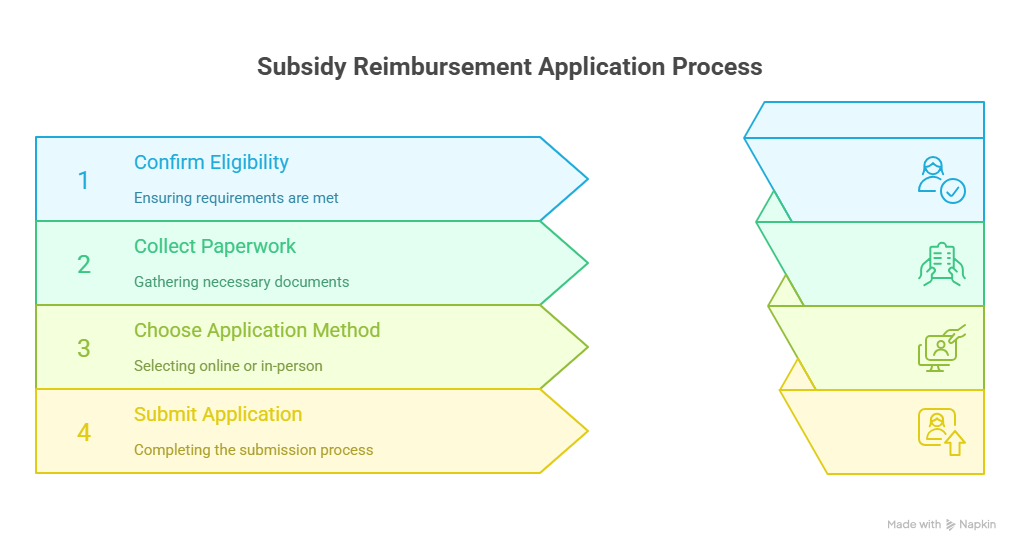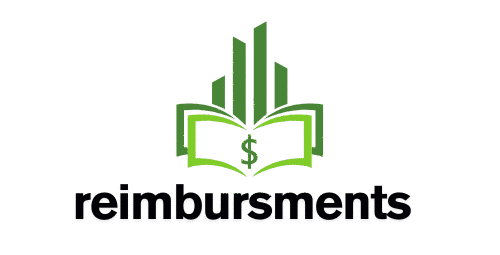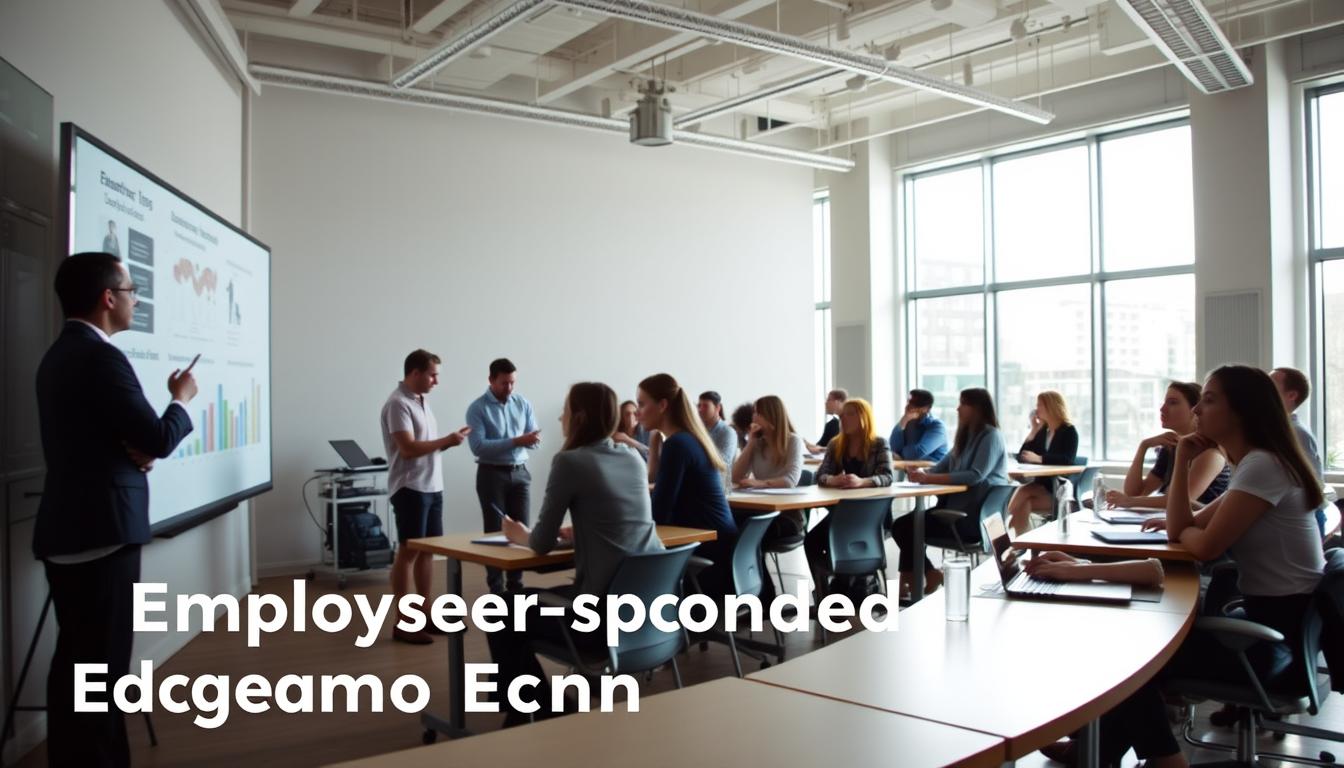Did you know that every year, financial assistance programs help thousands of people and businesses? Although the reimbursement for the subsidy program is intended to help those in need, many people do not know how to get these funds.
The goal of the Government Subsidy Reimbursement Scheme is to give qualified recipients financial assistance. To make it easier for you to take advantage of this beneficial program, this article will walk you through the eligibility requirements and the application process.
For those looking for financial aid, it is essential to comprehend the complexities of the Government Subsidy Reimbursement Scheme. You’ll be ready to assess your eligibility and confidently proceed with the application process by the time you finish reading this article.
Understanding Federal Subsidies in the United States
Anyone looking for government financial aid must understand federal subsidies. Federal subsidies are a type of financial assistance that the government offers to support a number of industries, such as healthcare, education, and agriculture.
What Are Government Subsidies?
Government subsidies are financial aid provided to people, companies, or groups in an effort to support stability and economic growth. These subsidies may take the shape of low-interest loans, tax breaks, or direct financial aid.
Types of Subsidies Available
The U.S. government provides a range of subsidies, such as healthcare subsidies to lower the cost of medical care, education subsidies to assist students in paying for their education, and agricultural subsidies to assist farmers.
Benefits of Subsidy Programs
Subsidy programs have many advantages. They lessen poverty, encourage economic growth, and assist people and businesses in gaining access to necessary services. By giving people financial aid, the government makes it possible for them to pay for necessities like healthcare and education, which eventually raises their standard of living.
Government Subsidy Reimbursement Scheme Eligibility
Financial and qualifying circumstances must be carefully evaluated in order to determine eligibility for the public sector subsidy reimbursement. The purpose of the Government Subsidy Reimbursement Scheme is to assist people and companies who fulfill certain requirements.
Income and Financial Requirements
To be eligible for the reimbursement plan for government subsidies, applicants must fulfill specific financial and income requirements. The type of subsidy and the applicant’s financial circumstances determine these requirements.
Qualifying Circumstances
There are certain requirements that people or businesses must meet in order to qualify for the subsidy reimbursement. These conditions are essential in establishing eligibility.
Individual Qualifications
People must show that they truly need the subsidy, which is frequently determined by their income or financial difficulties.
Business Qualifications
To be eligible for the subsidy reimbursement, businesses must fulfill certain requirements, such as industry relevance or the potential to create jobs.
Required Documentation
Applicants must submit complete documentation, such as identification, financial records, and proof of qualifying circumstances, in order to be considered for the Government Subsidy Reimbursement Scheme. A successful application depends on all documents being accurate and complete.
Application Process and Timeline
For a government subsidy reimbursement application to be successful, it is essential to comprehend the procedures and timeframe. The procedure is intended to be simple, with unambiguous rules to adhere to.
Step-by-Step Application Guide
Use these procedures to submit an application for the subsidy reimbursement program:
- To confirm eligibility, go over the requirements.
- Collect the necessary paperwork, such as identification and financial records.
- Select whether to apply in person or online.
Online Application Methods
For those who would rather submit their applications digitally, there is an online application portal. It walks applicants through every step and is easy to use.
In-Person Application Options
In-person application options are offered at specific offices for individuals who would rather take a more individualized approach. Direct communication with officials who can help is made possible by this method.
Common Application Mistakes to Avoid
Avoid typical errors like these to improve the likelihood that your application will be accepted:
- incomplete forms.
- missing records.
- inaccurate data..

What to Expect After Applying
The application will be examined by the appropriate authorities following submission. Within a given timeframe, applicants can anticipate receiving notification of the outcome. To prevent delays, it is crucial to make sure all information is correct.
Navigating the Governmental Subsidy Reimbursement Program
The purpose of the government subsidy reimbursement program is to give qualified people and businesses financial support. Comprehending the eligibility requirements and the application procedure is essential for obtaining reimbursement.
Applicants can make sure they are ready to submit their applications by going over the qualifying circumstances, required documentation, and income and financial requirements. The process can also be streamlined by avoiding typical application errors and knowing what to anticipate after applying.
You must submit your application if you think you qualify for the Government Subsidy Reimbursement Scheme. By following the steps listed, you can confidently navigate the program, which can offer substantial financial relief.
FAQ
What is the Government Subsidy Reimbursement Scheme?
The purpose of the Government Subsidy Reimbursement Scheme is to help people and businesses who meet certain eligibility requirements by offering financial support to help them defray the costs of particular expenses or activities.
How do I know if I’m eligible for the subsidy reimbursement program?
In addition to qualifying circumstances that differ based on whether you are an individual or a business, eligibility for the subsidy reimbursement program is based on financial and income requirements. To find out if you qualify, go over the eligibility requirements.
What documentation is required for the subsidy reimbursement application?
Financial records, identification, and evidence of expenses or activities associated with the subsidy are usually required documents for the subsidy reimbursement application. The particular paperwork required may change based on the kind of subsidy and your personal or professional situation.
Can I apply for the subsidy reimbursement online?
Yes, you can use the official government website or program portal to apply online for the subsidy reimbursement. This approach is practical and lets you monitor the progress of your application.
How long does it take to process a subsidy reimbursement application?
The complexity of the application and the processing agency’s workload can affect how long it takes to process a subsidy reimbursement application. You should anticipate waiting a few weeks to a few months to hear back.
What are some common mistakes to avoid when applying for the subsidy reimbursement?
Incomplete or inaccurate applications, missing deadlines, and failure to provide necessary documentation are common errors to avoid when applying for the subsidy reimbursement. Make sure you read the application requirements carefully and adhere to the guidelines.
Can I appeal a denied subsidy reimbursement application?
Yes, you might have the option to appeal the decision if your application for subsidy reimbursement is rejected. A formal appeal form or letter may be needed, and the appeals process usually entails providing more information or elaborating on specifics.
Are there any additional resources available to help with the subsidy reimbursement application process?
Indeed, there are frequently extra resources available to aid in the application process for subsidy reimbursement, such as government websites, customer service hotlines, and nearby offices or agencies that can offer direction and support.




